This service is relatively recent and result of the expansion of the facilities of the Institute and increase of equipment that took place at the beginning of the Strategic Plan 2010-2013, coinciding with the move to the new headquarters of the EEZA.
The service of laboratories is one of the facilities of the Institute, dependent directly of the Vicedireccion of the Institute. It encompasses 6 laboratories (chemistry, Molecular Biology, water and soils, Animal Physiology, plant physiology and geomorphology) provided technical support to the different lines of research of the EEZA. Its users are researchers or research groups of the Institute.
The service of laboratories also has an installation of animal House of Animal experimentation in which carry out studies related to the animal behavior under controlled environmental conditions and a total of 3 climatic chambers whose versatility allows to carry out studies, with small animals and plants involving a controlled environment monitoring in which develop (light(, temperature, humidity...). As complementary equipment service also has a cold room compartmentalized for the conservation of samples in cold (4 ° C and - 20 ° C) and a quarter of freezers commonly used for the conservation and maintenance of long-term frozen samples.
All the equipment of the laboratory service has been funded both by the users themselves (the researchers of the Institute) projects, such as the equips and PAI in different years.
This laboratory has its origin in the year 2010, at the start of the 2010-13 PE and before moving to the new headquarters of the EEZA to the campus from the UAL. He was born in the then existing laboratory of water and soil of the former headquarters of the Institute and is located on the first floor of the new building. Its core activity is based on analysis by liquid chromatography of high resolution (HPLC). To do this, it currently has the following equipment:
- High efficiency (HPLC) liquid chromatography equipment model LC-20AD Prominence UFLC-Shimadzu with the following modules, Automuestreador SIL-20A HT, oven for column CTP-20AC, Degasifier online for mobile phase DGU-20A5, communications module CBM-20th, diode Detector Array (UV-VIS) SPD - M20A (PDA), fluorescence Detector RF-10AXL, RID-10th refractive index Detector and CDD-10A VP conductivity Detector.
- Equipment and materials for the extraction/purification of various biological or inorganic matrices by liquid and solid phase compounds, formed by funnels decanters, SPE cartridges using solid-phase extraction equipment and vacuum equipment, microcentrifuge, bathroom heat with ultrasound, termobloc, vortex agitators and swing etc.
Nowadays, depending on the demand of the researchers of the Institute have protocols for extraction and analysis of the following compounds:
- Pigments in plants and animals
- Hormones in animal samples
- Nitrates in natural waters
- Ommocromos and pterins in spiders
- Ergosterol in litter
The laboratory has the ability to analyze a wide range of inorganic and organic samples as proteins, amino acids, hydrocarbons, pesticides thermolabile, sugars, fats, cations and anions.
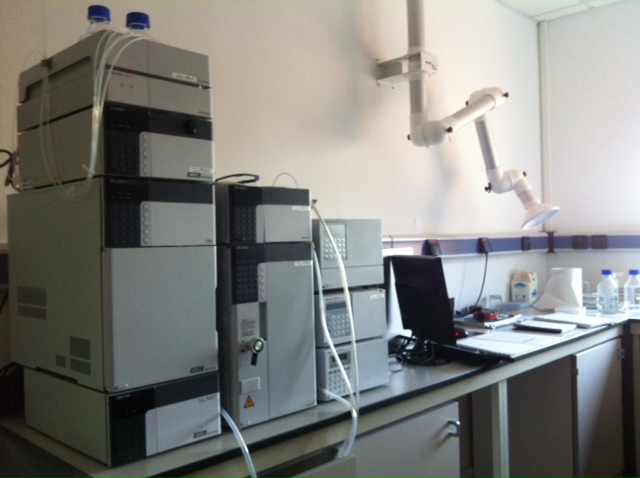
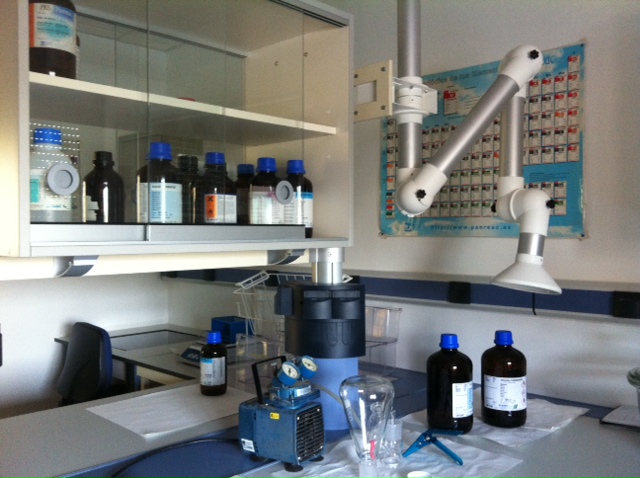
Laboratory of Molecular Biology
The laboratory of Molecular Biology (LBM) got its start in 2005 in response to the demand of some of the Institute's research lines related to evolutionary ecology, in order to enable and promote the application of molecular techniques in the research on ecology and conservation of species.
Their fundamental tasks focus on the extraction of nucleic acid (DNA or RNA) of a wide variety of biological material, both animal and vegetable, in order to carry out its amplification through PCR techniques and its subsequent genetic analysis through the sequencing of the genetic material, looking the latter by lacking sequencer at the Institute is engaged in external laboratories.
The main tasks carried out in this laboratory are:
- Sex determination of birds and mammals, via chromosomal markers, from blood or other biological material.
- Genetic characterisation of populations.
- Analysis of polymorphisms for the identification of individuals.
- Assessment of microbial biodiversity in heterogeneous environments.
- Analysis of parentage or kinship with microsatellites.
In general we can say LBM contributes to research tasks with the necessary infrastructure to carry out the first phase of the work, in what refers to the extraction of genetic material and its quantification, amplification and quality rating, to be sent to external sequencing services.
The laboratory has a space and equipment suitable for the storage of samples, thanks to the new acquisition of Chambers of refrigeration and freezing of the Institute both the accomplishment of tasks. We have the necessary infrastructure for the study of gene expression by Real Time Quantitative PCR.
Laboratory of soil and water
This laboratory was formed at the beginning of the 90s of the last century before moving to the new headquarters of the EEZA. He was born thanks to the funding from national and European projects on hydrology and erosion, and dedicates its activity to determine morphological, micromorphological, physical and chemical properties of the soils of Brambles environments, as well as water from backgrounds different in these ecosystems (precipitation, runoff, throughfall, cortical runoff, etc.).
Basically the laboratory is well equipped for the majority of the tasks that are carried out on it, although it lacks some elements that could improve its Endowment as a stirrer in swing, a calcimetro of BERNARD and KJELDAHL equipment for determination of total nitrogen.
Fundamental analyses that are conducted on demand of the researchers of the Institute are the following:
- Water analysis: determination of pH, electrical conductivity, carbonates and bicarbonates, dry residue and different types of filtered content
- Soil analysis: preparation of samples, determination of the composition of the sample dry air, sieved, previous tests for the determination of salinity, determination of pH, etc, as well as the determination and quantification of plasters, granulometric analysis, bulk density, and quantification of saturated paste, soluble carbonates, bicarbonates, total sulfates, chlorides, etc.
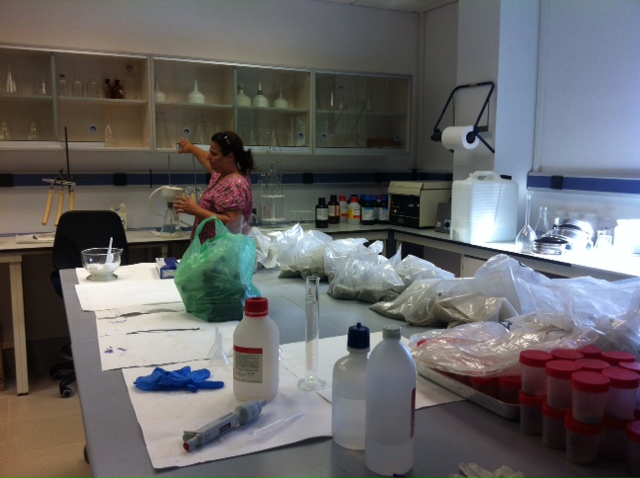
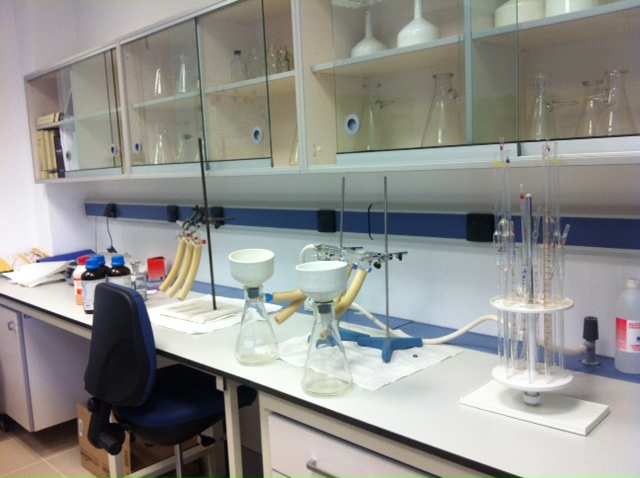
Laboratory of Animal Physiology and microbiology
The laboratory of Animal Physiology started coinciding with the move to the new headquarters of the EEZA at the beginning of the last Strategic Plan 2010-2013 and has its origin in the old zoology laboratory of the building occupied by the Institute. It is in a dependency of about 70 square metres of the second floor of the building and has the furniture and equipment needed for the tasks that are developed. It is partitioned into three areas: a microscopy, one for preparation and study of microbiological cultures and one of General animal physiology-related activities. The laboratory also has a complementary enclosure (sala de autoclaves) and a warehouse of material.
In general the laboratory is equipped with centrifuges, precision balances, baths with hot water, pH, MiliQ, and pure water equipment autoclaves, range hood, laminar flow hood, spectrophotometer UV-V, spectrophotometer for reading plates, electrophoresis equipment, stirrers, vortex, mono pipettes and multichannel and different instruments.
Activities that are conducted in this laboratory are, among others the following:
- Detection and quantification of glomalin in soils.
- Quantification of lutein in plasma of birds.
- Quantification of immunoglobulins in birds (carracks, owls, penguins, among others) by ELISA technique.
- Quantification of proteins of stress (HSPs).
- Electrophoresis of proteins in gels (SDS-PAGE).
- Identification and quantification of blood parasites.
Laboratory of plant physiology
Laboratory of plant physiology is a new laboratory created in 2010 coinciding with the former PE 2010-13 and result of the spin-off of the former laboratory of agua-suelos and the former headquarters of the EEZA plants. It is located on the second floor of the new building.
The tasks that are carried out in this laboratory include those related to measurements of physiological or morphological plants and plant materials, such as the emission of fluorescence, photosynthesis, biomass, leaf area, root architecture, the relative content of water, water potential, osmotic potential and vacuum extraction cryogenic.
Definition, control and/or quantification of flowers, fruits and seeds, with the help of microscopy if necessary, are also tasks that are carried out in this laboratory. Since it has no technical assigned these tasks are carried out mainly by the researchers or scholars linked to related projects.
The laboratory is equipped with specific equipment for measurements of photosynthesis, conductance, respiration, chlorophyll fluorescence and water of stomata potential, as well as mill, muffle for the calcination of vegetable matter, range hood, stove for drying of samples, osmometer for the determination of vapour pressure, a scanner to transform, through the use of light, printed images of documents, plant material, etc. to digital format; balances of precision, etc.
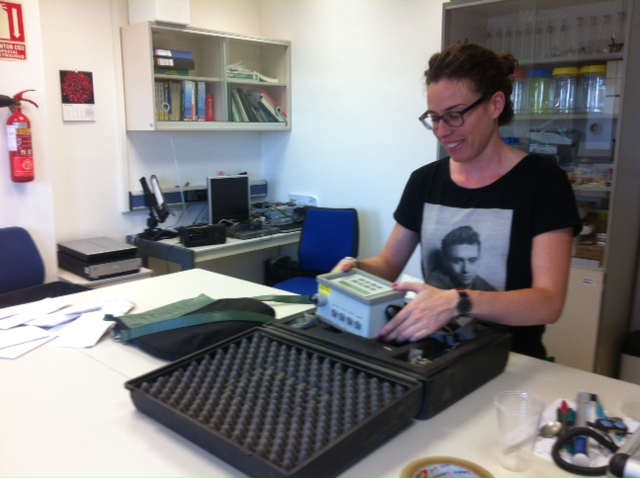
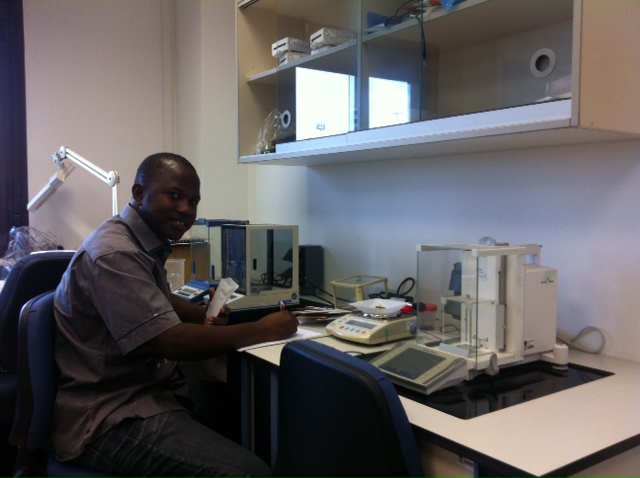
Laboratory of geomorphology
This laboratory also has its origin in the early 1990s and its activities together with the laboratory of soils at the headquarters of the former Institute. He was born thanks to the funding from national and European projects on hydrology and erosion.
The activities of the laboratory focus on specific analyses on aggregates of soil resistance to the impact of the raindrops, the scabs of penetration resistance, hydrodynamic properties of surface crusts, rheological properties of sediments in the Middle aqueous, all in a wide range of environmental conditions mainly semi-desert, and on various time scales. In addition it also addresses experimentally geomorphological processes such as weathering, runoff and the generation and deposition of sediments.
The laboratory, located on the ground floor of the new building of the EEZA, consists of two connecting rooms. The largest room is intended for analysis of lands of coarse grain (gravel and sand) sediments analysis, stability of aggregates, mechanical tests and rheology (e.g., limits of Atterberg, COLE index, viscosity, etc) and is equipped with sifters, wet sieving analysis sink, ovens for drying of samples and small instrumental specific. As supplementary equipment it also has topographical equipment, including laser Leica Scanstation 2 Theodolites, GPS and a scanner. Among the equipment of this laboratory counts also with sieves, binocular loupes, fiber optics cold light source, Olympus BX-50 microscope polarization, Brookfield viscometer, etc.
Next to the main hall, there is a special room double height for the study of the effect of the kinetic energy of rain.